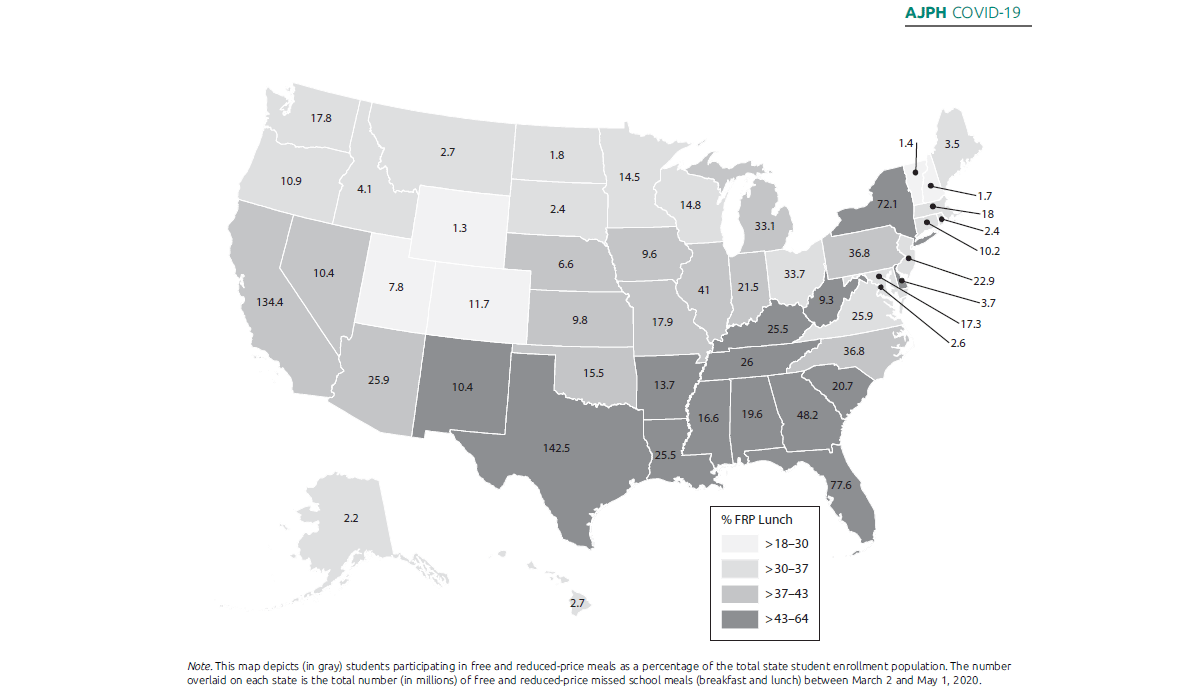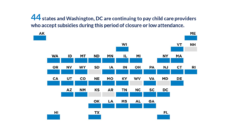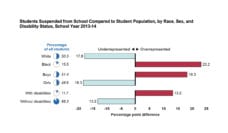The National School Lunch Program offers free and reduced-price meals to lower income students attending public and nonprofit private schools, as well as to residential child care facilities. The program mitigated child hunger in 2019 by serving over 30 million lunches daily and the School Breakfast Program served over 15 million breakfasts. However, school closures due to the Covid-19 pandemic unraveled the security of this federally-funded safety net program overnight.
Eliza Kinsey and colleagues reviewed the impact of school closures on students participating in free and reduced-price lunch programs in the first few months of the shutdown. The map above shows in shades of gray the proportion of students in each state receiving free and reduced-price lunches prior to March 2, 2020. The dark gray states had the most students receiving subsidized lunch. The number shown on each state represents the total number (in millions) of missed school meals in March and April.
Over 75% of the students participating in National School Lunch Program qualify for free or reduced-price meals because they live in a household with an income below 185% of the federal poverty level. Families were challenged with providing more meals for their children at the same time that they were losing jobs and income.
The Families First Coronavirus Response Act expanded how and when school lunches were served. Kinsey and colleagues highlight innovative ways school districts across the nation began adjusting their programs to ensure students continued to receive meals despite being absent from the school building. In addition to beginning outdoor meal distribution practices, some communities expanded the amount of food that students received and their eligibility criteria.
The cancellation of school closures due to Covid-19 only highlights the realities that some families face when schools close for the summer. Optimistically, this dedication to ensuring students receive meals when schools are closed will continue beyond the days of masking up and physical distancing.
, 2020: School Closures During COVID-19: Opportunities for Innovation in Meal Service American Journal of Public Health 110, 1635_1643














